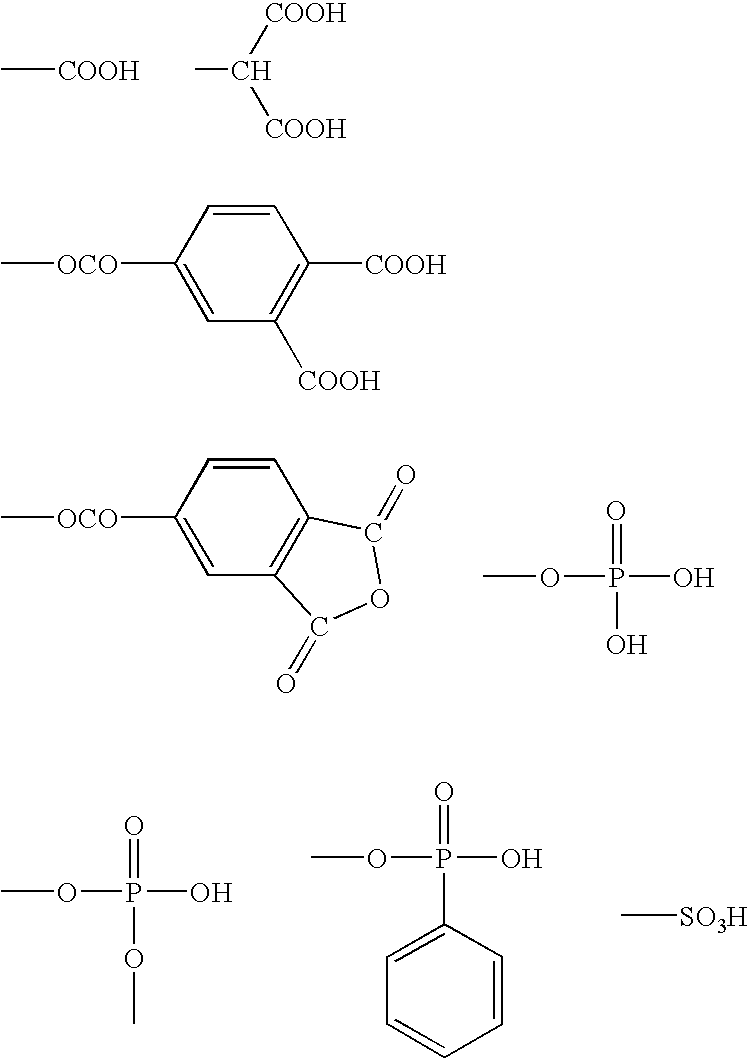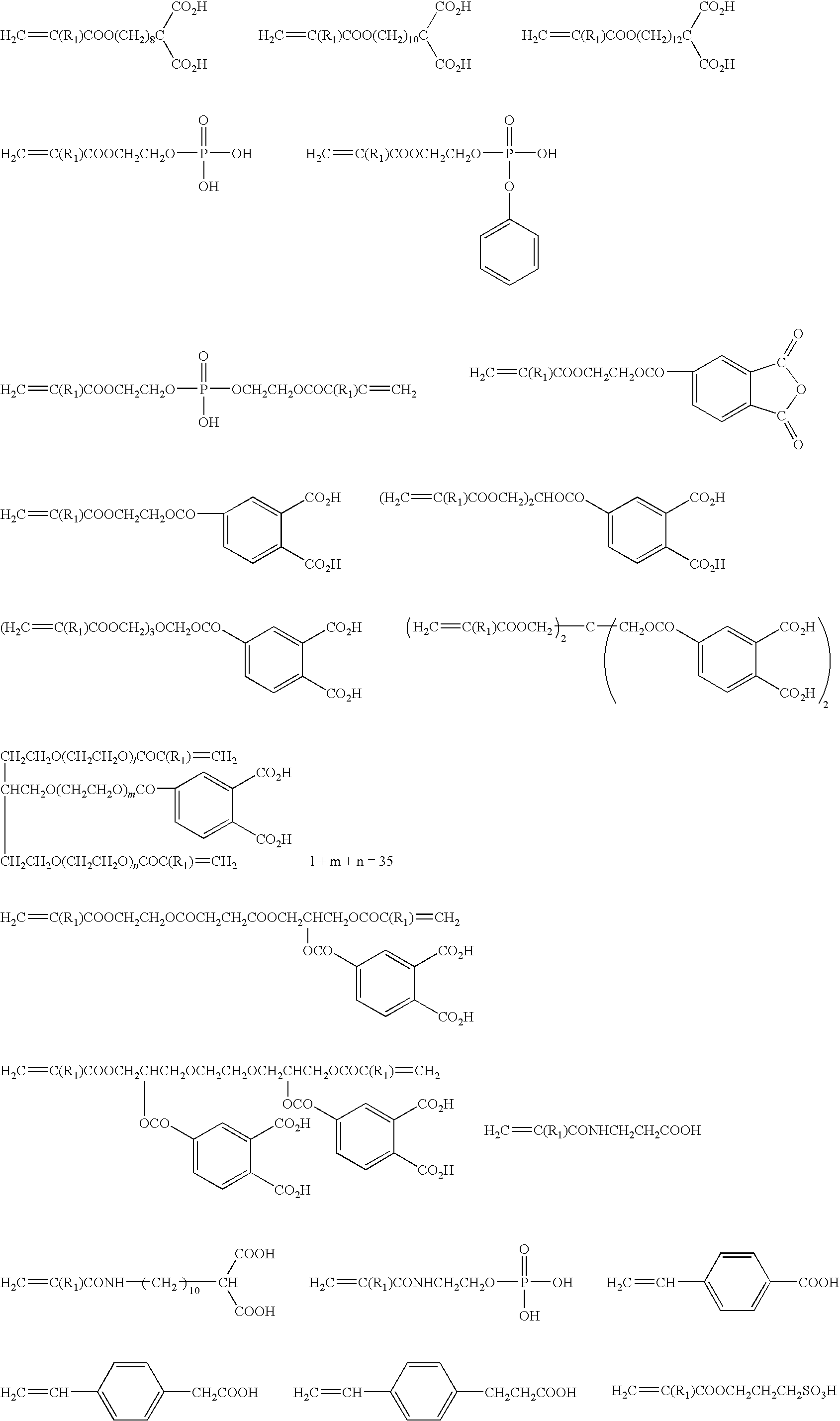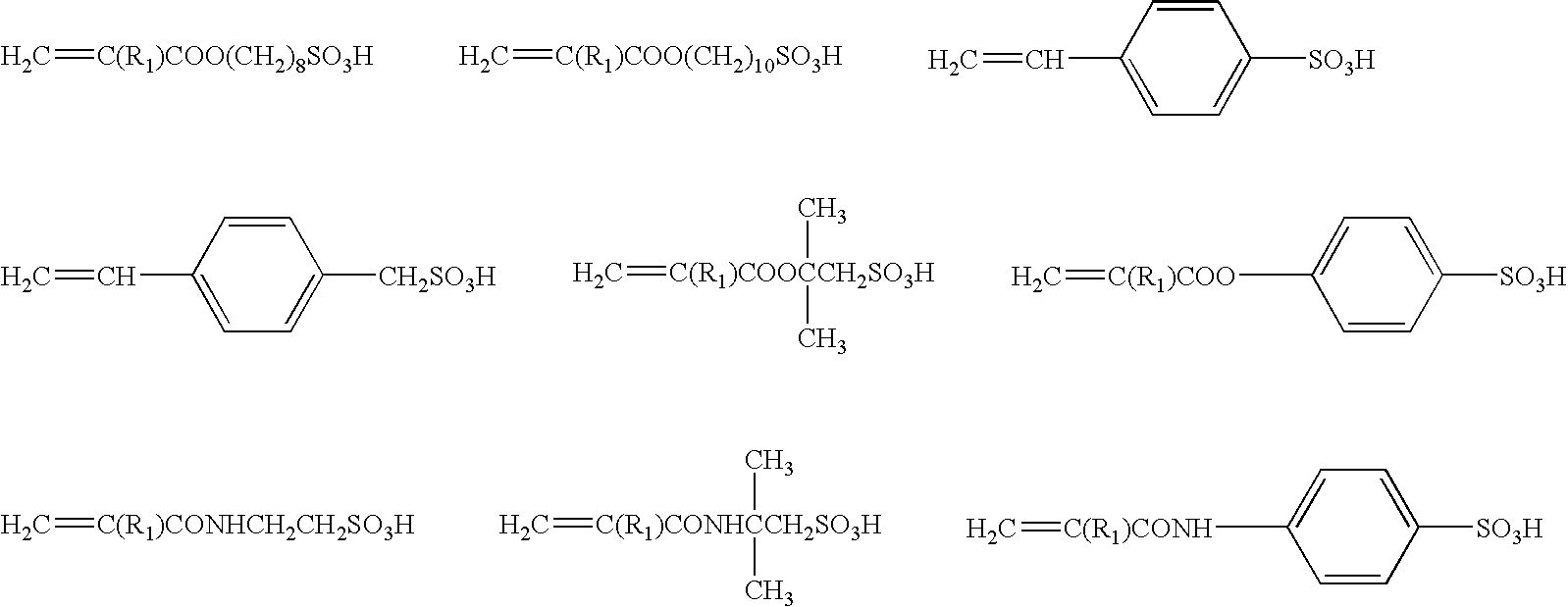Dental Curable Composition
a technology of curable composition and dental implants, applied in dental surgery, tooth capping, transportation and packaging, etc., can solve the problems of excessive ionic crosslinking, light cannot reach the bottom portion of the teeth to a sufficient degree, adhesive cannot be sufficiently cured by photopolymerization, etc., to achieve enhanced ionic crosslinking, improve the curing property, and increase the strength
- Summary
- Abstract
- Description
- Claims
- Application Information
AI Technical Summary
Benefits of technology
Problems solved by technology
Method used
Image
Examples
preparation example 1
[0467]A fluoroaluminosilicate glass powder (Tokuso Ionomer manufactured by Tokuyama Dental Co.) was pulverized into an average particle diameter of 0.5 μm by using a wet continuous-type ball mill (New My-Mill manufactured by Mitsui Kozan Co.). Thereafter, the filler surfaces were treated with 5.0 N hydrochloric acid of an amount of 20 g per gram of the powder for 40 minutes to obtain a polyvalent metal filler (F-1).
[0468]0.1 Gram of the thus obtained polyvalent metal filler (F-1) was dipped and held in 10 ml of an aqueous solution containing 10% by weight of maleic acid and maintained at a temperature of 23° C. for 24 hours, and the amount of polyvalent metal ions that have eluted out was analyzed by the ICP (inductively coupled plasma) emission spectroscopy.
[0469]As a result, the amount of ions eluted out from the polyvalent metal filler (F-1) in 24 hours was 10 meq / g of filler (Al3+=6.7, La3+=2.8, Ca2+=0.5).
preparation example 2
[0470]A polyvalent metal filler (F-2) was obtained in quite the same manner as in Preparation Example 1 but conducting the treatment with 5.0 N hydrochloric acid for 20 minutes.
[0471]As a result of the ICP emission spectroscopy, the amount of ions eluted out from the polyvalent metal filler (F-2) in 24 hours was 25 meq / g of filler (Al3+=16.7, La3+=6.9, Ca2+=1.4).
preparation example 3
[0472]A polyvalent metal filler (F-3) was obtained in quite the same manner as in Preparation Example 1 but without at all conducting the treatment with hydrochloric acid.
[0473]As a result of the ICP emission spectroscopy, the amount of ions eluted out from the polyvalent metal filler (F-3) in 24 hours was 50 meq / g of filler (Al3+=33.4, La3+=14.0, Ca2+=2.6).
PUM
| Property | Measurement | Unit |
|---|---|---|
| Percent by mass | aaaaa | aaaaa |
| Solubility (mass) | aaaaa | aaaaa |
| Volatility | aaaaa | aaaaa |
Abstract
Description
Claims
Application Information
 Login to View More
Login to View More - R&D
- Intellectual Property
- Life Sciences
- Materials
- Tech Scout
- Unparalleled Data Quality
- Higher Quality Content
- 60% Fewer Hallucinations
Browse by: Latest US Patents, China's latest patents, Technical Efficacy Thesaurus, Application Domain, Technology Topic, Popular Technical Reports.
© 2025 PatSnap. All rights reserved.Legal|Privacy policy|Modern Slavery Act Transparency Statement|Sitemap|About US| Contact US: help@patsnap.com



